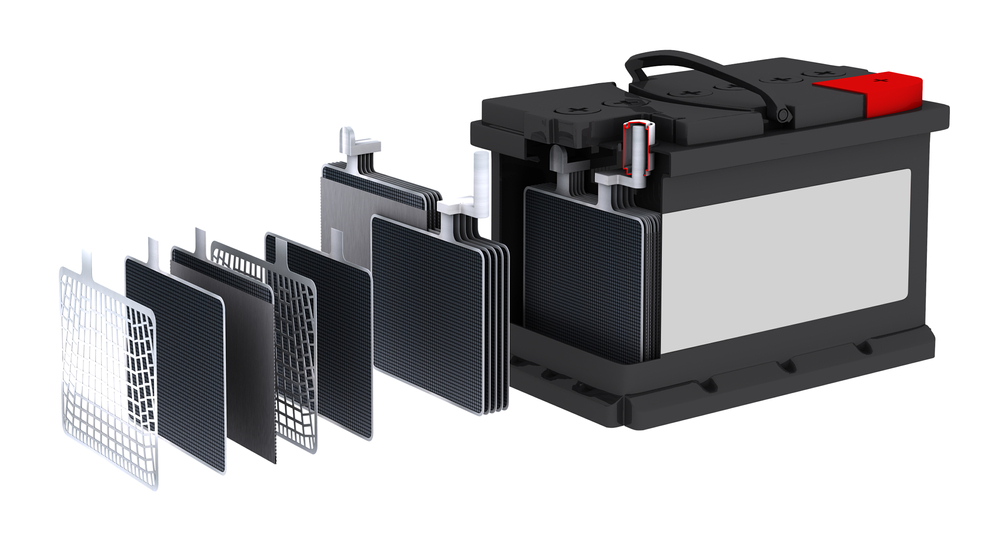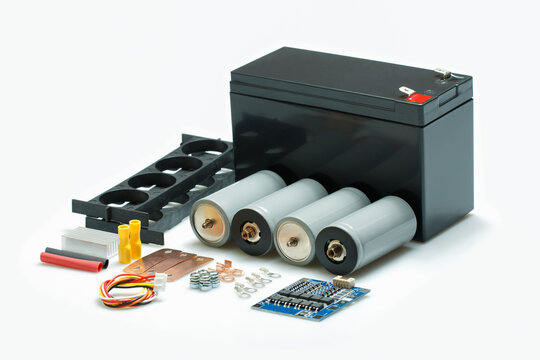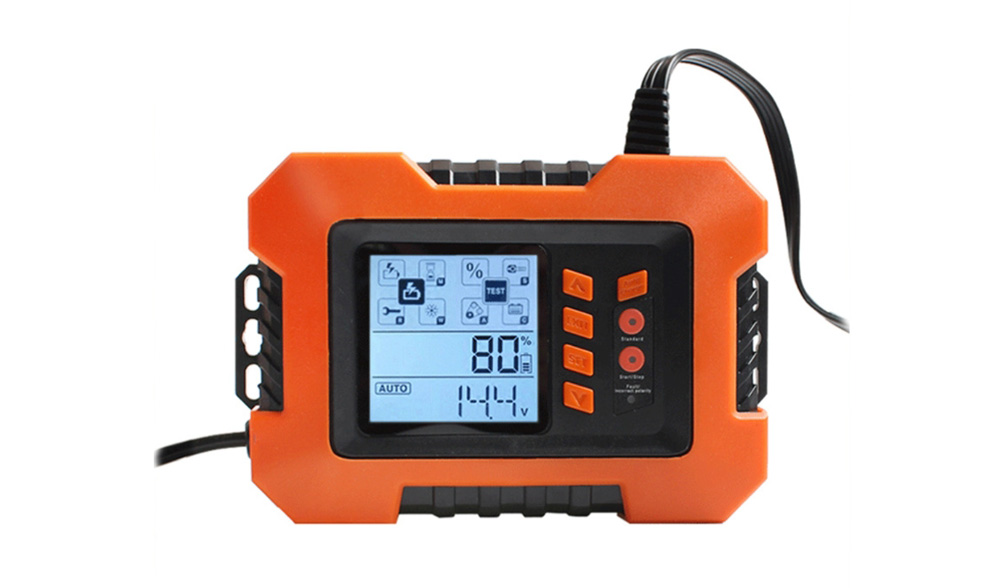Born in the mid-19th century, lead acid batteries are a type of battery with lead and its oxide as the electrode and sulfuric acid as the electrolyte. When they are discharged, the main component of the positive electrode is lead dioxide and the main component of the negative electrode is lead. When they are charged, the main component of both anode and cathode is lead sulfate. After decades of development, there are currently a variety of lead acid batteries available on the market. They play an important role in transportation, communication, electricity industries, etc. The following is an introduction of the commonly used car batteries.

Flooded Lead Acid Batteries (Wet Cell)
All lead acid batteries in the early days contain liquid electrolyte. For the presence of a large amount of sulfuric acid, they are also called wet cells. Flooded lead acid batteries containing sulfuric acid electrolyte were the earliest and most common type of lead acid batteries. The basic difference between them and the VRLA batteries which will be mentioned later is that they are not sealed. The first reason why they are not sealed is that they are filled with sulfuric acid. They require constant watering, periodic balancing, and the use of a hydrometer to measure the gravity of the electrolyte. And, unlike VRLA batteries, they emit a certain amount of hydrogen when they are being charged. So, for the emission of fume, they cannot be sealed.
Calcium Batteries
Calcium batteries are also a common type of lead acid batteries. They are called calcium batteries because about 1% calcium is added to both the positive and negative electrodes. By doing this, it helps reduce water loss due to the presence of gas in the battery. It also allows the battery to be sealed and maintenance-free, which makes it impervious to extreme weather conditions and the impact of higher charging rates. However, if a calcium battery is left idle for a long time, it still needs to be recharged by a charger. If calcium batteries are used for deep cycle use, it is best to choose a charger specifically designed for calcium batteries to make the most of their service life.
EFB (Enhanced Flooded Batteries)
Compared with traditional flooded lead acid batteries, EFB (enhanced flooded batteries) are more durable. They are quite similar to the AGM (absorbent glass mat) batteries which will be described later. They are also more cost-effective for carmakers. The advantages of EFB batteries are reflected in their longer service life, lower internal resistance, and higher load capacity. Their cycle life can be twice as many as traditional starter batteries. However, it should be noted that such batteries, although not suitable for greater performance, are suitable for car use on urban roads. If a greater performance is required, then AGM batteries will be a better choice.

AGM (Absorbent Glass Mat) Batteries
AGM batteries are common VRLA (valve regulated lead acid) batteries or SLA (sealed Lead acid batteries) batteries. As a VRLA type, AGM batteries are better choices than the conventional lead acid batteries. One of the advantages is that there will be no leakage concern of the electrolyte. AGM cells are made from ultra-thin fiberglass mats, which are sandwiched between plates soaked in sulfuric acid and welded into place. This structure allows the fiberglass mat to be packed tightly with the plates. By doing this, they are resistant to vibration. AGM batteries are better options when there is a demand for a large amount of current. Their longer service makes them more durable. AGM batteries can even maintain its excellent start-up capability even in the case of low power. They can be charged faster than traditional lead acid batteries. With the above-mentioned advantages, they can satisfy the demands of the start-stop operation and the recovery of the kinetic energy released during braking or thrust operation in vehicles, which means they can save more fuels.
Gel Cells
Similar to AGM batteries, gel cells are another type of VRLA batteries. Unlike other types of lead acid batteries, in a gel cell, its electrolyte is suspended on silica type gel, a viscous paste-like substance that allows electrons to flow between the plates. In terms of power capacity, a gel cell of the same size cannot provide the same battery capacity as an AGM battery. However, the advantages of gel cells are their lower self-discharge rate, better adaptability to higher temperature conditions and excellent deep-cycle performance. When choosing battery chargers for them, compared with ordinary lead acid batteries, only car battery chargers that can match their deep cycle feature can be selected. These batteries must be properly charged. Otherwise, there will possibly be premature battery failure.
It is quite common that AGM batteries are often mistaken as gel cells. Both the two types of batteries are similar in many aspects. Firstly, both of them are VRLA batteries. So there will be no concern about the leakage of electrolyte. Secondly, when they are used, they can be installed anywhere. Thirdly, both of them have a low self-discharge rate. Last but not least, in limited environment where there is a poor air ventilation condition, the safe use of both of them can be promised.

LiFePO4 Batteries
And the final type of car batteries are lithium iron phosphate batteries, which are also known as LFP batteries. LFP batteries use lithium iron phosphate as the cathode material and carbon as their cathode material. Unlike these above-mentioned lead acid batteries, lithium iron phosphate batteries fall into the category of lithium batteries. They are often used as power batteries for electric vehicles. It has a lower energy density than the conventional lithium-ion batteries. The reason why they are widely used is that they are safer, less expensive and more durable.
To learn more about LFP batteries, please go to our blog: Basic Knowledge of Lithium Iron Phosphate Battery.
The Selection of Car Battery Chargers
Normally, a car battery can be recharged with the daily use of the car. But occasionally, a car battery will be unable to be normally charged for many reasons. For most of the car battery problems, a battery charger will be an easy solution. When choosing car battery chargers for the above batteries, except for gel cells and LFP batteries, one battery charger can generally be applied for the charging of all other batteries.
Steps for Selecting the Right Car Battery Chargers
1. Identify the battery type
The type of the battery should be identified when it need to be recharged. Battery information is often printed or marked on a label on the top or side of the battery. Battery type and other information can be easily obtained by reading these labels.
2. Select car battery chargers with the right voltage and current output
When choosing an adaptable car battery charger, ensure that it has a voltage and current output that match the battery. The voltage setting in a selected car battery charger should be in accordance with that of the battery. And as a rule of thumb, a battery charger that matches the battery should have a current rating at least 10% of the current rating of the batteries. In other words, for a 100 Ah car battery, its adaptable battery charger should have a current output which is at least 10 amps.

Must check: 6V-12V Car Battery Charger
3. Different types of car battery chargers
Proper use and maintenance are of great help to improve and maintain the performance of lead acid batteries. Therefore, as an important aspect, attention should be paid when choosing lead acid battery chargers. The main purpose of a conventional car battery charger is to charge a dead car battery. But there are other members in the extended family of car battery chargers. For instance, a fast charger with a higher charging current can quickly finish the charging of a battery. A battery maintainers or a trickle charger can adopt a slow charging mode to keep the power level of a battery and maintain its health when it is not in use. A pulse repair battery charger can restore the capacity of lead acid batteries that have failed due to sulfation problem. Therefore, for differentiated purposes, there are different types of car battery chargers available on the market.
